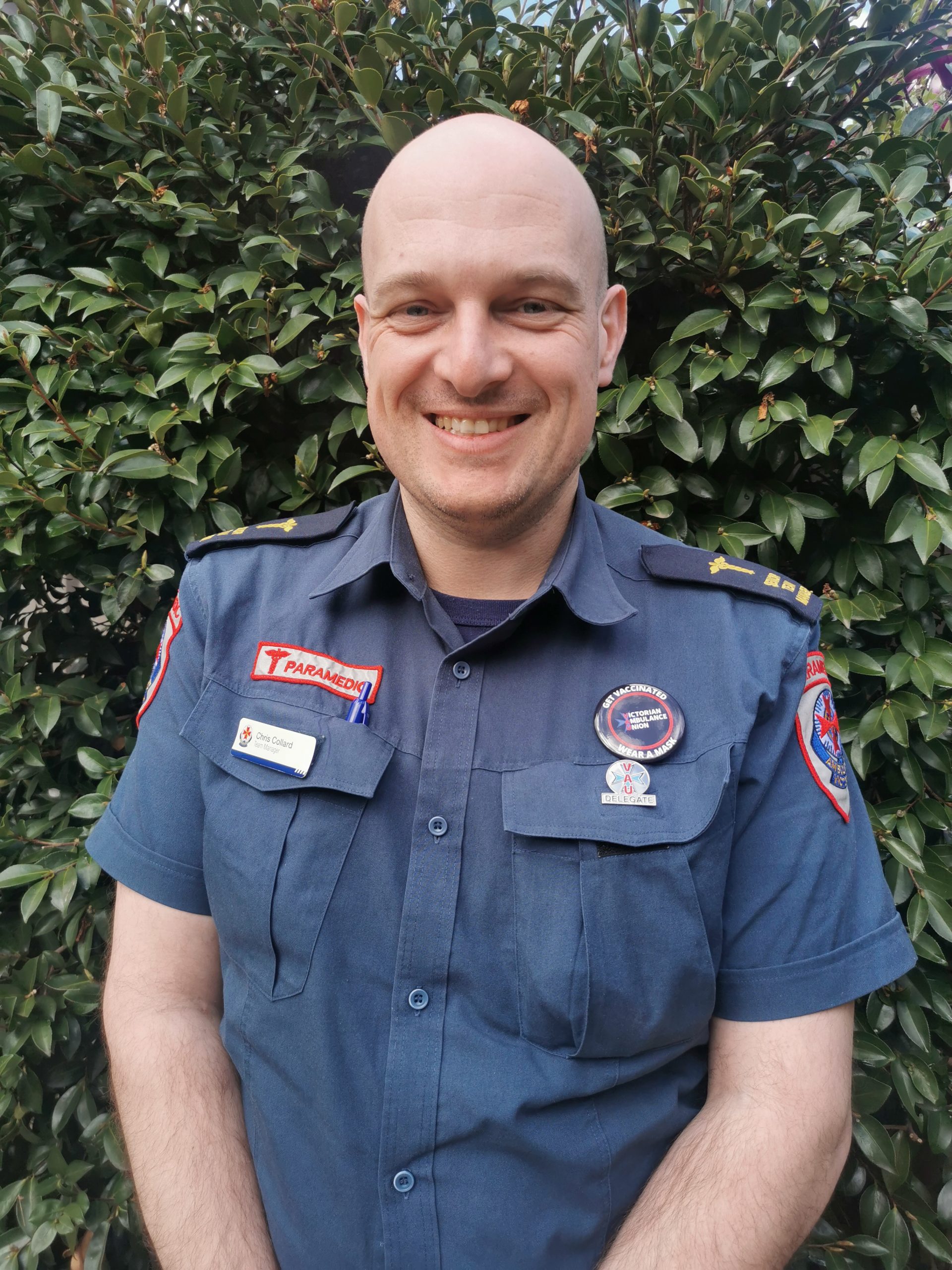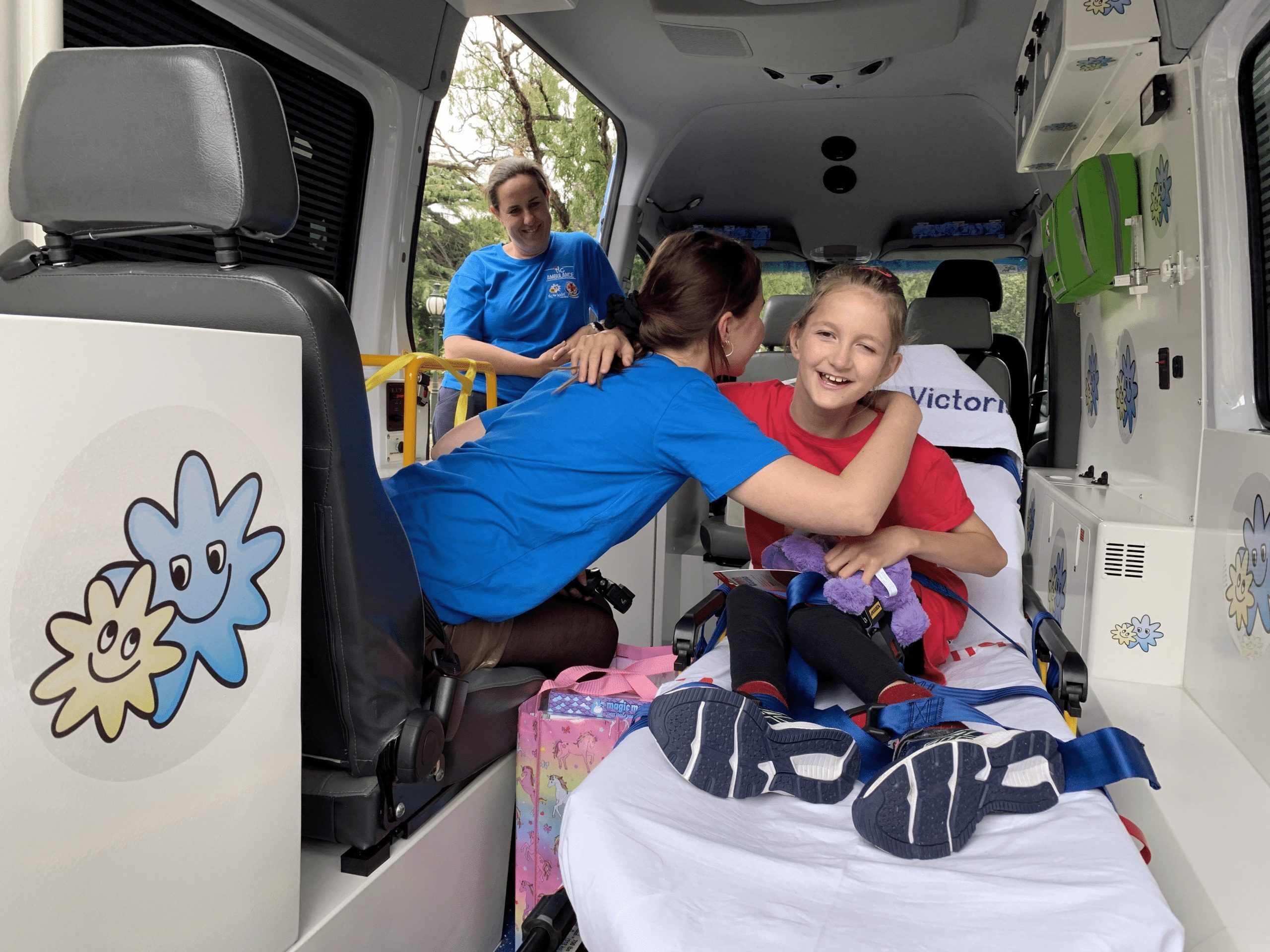Community Voices
Stories from Our Community
Police Ambulance Triage Team (PATT)
The Police Ambulance Triage Team (PATT) is a joint initiative between Victoria Police and Ambulance Victoria aimed at better responding to the health needs of people in Melbourne’s CBD on Friday and Saturday nights.
The need for the collaboration was identified in 2015 when Ambulance Victoria found it was responding to a large number of cases on a Friday and Saturday night that did not require transport to hospital but did require the assistance of police.
Similarly, Victoria Police was responding to many cases that required medical assessment or minor medical intervention.
PATT was established in 2016 to reduce both the number of patients being transported to hospital unnecessarily and wait times for emergency assistance. Police and paramedics working in the CBD on Friday and Saturday nights report feeling less at risk of occupational violence and have also formed greater links with local community services.
“Working with police officers on the PATT is always rewarding. This collaboration significantly reduces the burden on both police and ambulance resources and allows patients to receive more timely care. Working closely with police has allowed me to gain a better appreciation of the important work police do in our community. By joining forces, we are making a real difference on Friday and Saturday nights in the CBD. I enjoy working on this unit because I feel I am reducing the number of ambulances being sent to cases unnecessarily and providing patients with appropriate outcomes that avoid transport to hospital if it’s not required. I feel PATT has really strengthened the working relationship between police and paramedics.”
Chris Collard, Senior Team Manager
Transforming stroke care for regional and rural Victorians
Stephen Fullarton was enjoying an afternoon surf in June 2021 when he suffered a massive stroke.
The 69-year-old Phillip Island local found himself under the water paralysed and sinking.
“I can remember being under the water. It was quite a big swell that day,” he said.
Fortunately, another local surfer noticed Mr Fullarton being dragged under water and recognised the signs of a stroke. The surfer helped Mr Fullarton back to shore and called Triple Zero (000)..
Mr Fullarton was taken to Wonthaggi Hospital where he underwent a Victoria Stroke Telemedicine (VST) consultation. Ambulance Victoria’s VST uses telehealth to connect patients and treating clinicians with a network of neurologists and stroke specialists that are able to provide diagnosis and advice on treatment.
Following the consultation Mr Fullarton was flown by air ambulance to The Alfred Hospital to be treated for haemorrhagic stroke (bleeding into the brain).
Mr Fullarton said his experience was extraordinary.
“Everything lined up for me, from being spotted in the water by the locals to how quickly paramedics got me up the cliffs and to hospital where I was connected to the stroke specialists,” he said.
“I was on my way to The Alfred in what seemed like no time at all. It’s just amazing.”
Ambulance Victoria Director Stroke Services Professor Chris Bladin said Mr Fullarton’s case demonstrates how VST is transforming stroke care for regional and rural Victorians.
“The outcomes for patients treated through VST are equivalent to those achieved when patients present at hospital in metropolitan Melbourne,” Prof. Bladin said.
“Through VST, we are giving stroke patients the best chance of making a good recovery by getting them the best care faster, no matter where they live”
Mr Fullarton was able to walk within days of starting rehabilitation and has regained his speech.
Quick thinking and a group effort saved Bill’s life
The quick actions of his wife and neighbours, and lifesaving equipment at the local shopping centre, saved Bill Stavretis’ life.
Bill and his wife Faye were mowing the lawns at their holiday property near Clunes when the 63-year-old collapsed to the ground.
Mrs Stavretis alerted nearby neighbours and called Triple Zero (000).
A 000 call taker guided her through CPR while neighbour Ashley Gillespie raced into Clunes to grab the public automated external defibrillator (AED) from the wall of the local IGA.
Mr Stavretis was revived after receiving three shocks from the defibrillator and quality care from paramedics. He spent the next six weeks in hospital after quadruple bypass surgery and is thankful to be alive.
“I can’t thank all those who saved me enough. I wouldn’t be here without everyone’s help,” he said.
Mr Stavretis’ case highlights the importance of learning CPR and having AEDs that are accessible to the community.
Ambulance Victoria donated 100 AEDs to communities across the state.during the 2021 Shocktober campaign.
TLC Ambulance
AV is a proud partner of the TLC Ambulance, which transports sick children with a terminal illness to their most treasured destinations to experience that joy again.
Paramedics donate their time and provide both support and clinical treatment during special trips such as taking a child home for a cuddle with a family dog, a trip to the beach, or driving by Christmas lights.
Stephie’s Day at the Zoo
Our very first TLC Ambulance guest was avid animal lover Stephie.! With the TLC Ambulance we were able to make Stephie’s wish come true by taking her, her mum Kylie and brother Robbie to Werribee Zoo for the day.
Stephie was more than excited for her trip telling the paramedic crew: “I’m ready for the time of my life!”
Stephie spent hours wandering around the zoo seeing the different animals and engaging with zookeepers, soaking up the atmosphere and brightening the day of every single person she came across.
Local Aboriginal artist gives regional headquarters a facelift.
Ambulance Victoria’s Barwon South West regional office has strengthened its ties with the Wadawurrung people in the form of a new mural at the Belmont premises.
Visible to those passing by the Colac Rd headquarters, the colourful mural was painted by local Aboriginal artist BJ O’Toole.
Artwork by BJ O’Toole – Wadawurrung Traditional Owner, living on Wadawurrung country.
The artwork represents elements of Mother Earth, water, sun, people and animals. Bunjil the eagle represents the creator of land and the protector of all things including the health of the people.
The line markings and symbols used are traditional to Wadawurrung Country. The U shapes in the mural represent the people coming together, and the blue represents water, the Barwon River. There are also many animal tracks depicted. Handprints are connection to Country and leaves symbolise peace. The animals incorporated hold significance to Wadawurrung People and their culture. Bunjil the eagle, Waa the crow, Parwang the magpie and the black swan.
Baby Henry’s challenging arrival
Henry Quayle surprised his mother when he decided to come into this world six weeks early and his arrival was not a smooth one.
Anna Quayle was home alone when she called Triple Zero (000) after going into labour unexpectedly.
The first responders had a difficult time navigating her apartment complex and were struck by dead-ends, locked stairwells, and lifts out of action – eventually taking their axes to doors to reach Ms Quayle.
When paramedics and the firefighters finally reached her, they found baby Henry half emerged feet first and in a dangerous position. His umbilical cord was compressed, which had reduced blood flow to his brain.
Paramedic Gus Lindenmayer and firefighter Rob Gamble helped to quickly deliver little Henry who was unconscious and not breathing.
Mr Lindenmayer wrapped Henry in a towel and vigorously rubbed him, trying to coax him back to life.
“Initially I listened to his heart and couldn’t hear any sounds at all,” he said.
Time was running out for Henry, so Mr Lindenmayer commenced CPR and managed to get Henry’s heart beating again.
“I listened again and he had a heart rate of six beats per minute. The next time it was 64. It was still quite slow, but it indicated he was no longer in cardiac arrest. It was a relief.”
A MICA paramedic then arrived and helped provide 20 minutes of ventilation. Henry spent a month in hospital, but, has since recovered and celebrated his first birthday.
“It’s impossible to express enough gratitude for what they’ve done,” Ms Quayle said.


